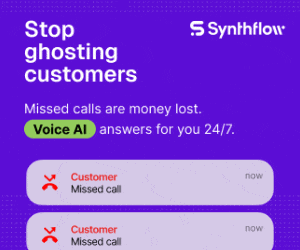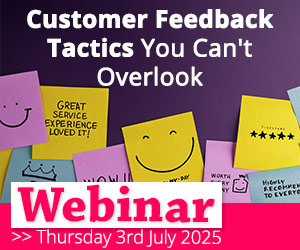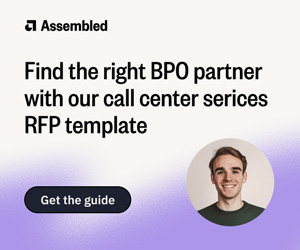Mats Rennstam takes a look at how to increase sales in your contact centre – without treating your customers unfairly.
1. You can’t sell to customers kept in the IVR
Having focused on trying to automate as many calls as possible, many companies wanting to sell more to their customers now feel they’ve shot themselves in the foot. In the banking sector, the average number of calls handled by IVR is as high as 70% and the figure is going up for all other sectors as well.
The key is to take an overall view on the calls you handle; which ones are the most valuable, the simplest, the most difficult, etc. and then decide on different approaches to different type of calls. Then get a balance between the cost-saving automation and the (potential) revenue-generating live call handling.
2. Look at an agent’s potential to sell to the caller
A common scenario, when a decision has been made that something radical has to be done to increase sales, is that RFPs immediately go out to training providers for them to wave their magic wands. Training might be what is needed, but let’s first look at an agent’s potential to sell to the caller.
One of our benchmarking exercises showed that out of 100 customers, 20 of them don’t get through, 12 of those that do have to wait for an unacceptably long time and another 18 do not get their query resolved. This only leaves 50% of the original calls where agents can even begin to try to up-sell.
3. Look at C-SAT and sales side-by-side
Voice of customer solutions are great for finding out what and who drives C-SAT. In the “Bright Navigator” V.O.C. solution, we take this a step further by allowing clients to upload their productivity and sales metrics as well.
This enables them to see who the true best agents are, i.e. the ones that are both productive and generate good customer satisfaction. Or the ones who generate better sales results but not at the cost of unhappy customers. For Financial Services companies this additional layer of monitoring is encouraged by the FCA.
4. Segment your customer base
The next step is not to treat all the calls the same. The bigger companies have great CRM systems that, if actually utilised, can support the agent with different prompts for different customers etc.
But even without this, you can go a long way by just asking your agents to log these three simple facts:
- Did the customer have an intention to buy?
- Did they in fact order?
- Was it an existing customer?
This data can help you segment your calls into 18 different groups and create a strategy. You will see that you have very different results in different groups and can save time in some by not trying to up-sell, and improve AHT in others. By doing this, one of our clients increased their sales by 42% in one month.
5. Don’t just reach for the low-hanging fruit
You get what you measure is an old contact centre truth; another is you get what you remunerate. So if you remunerate on total sales per agent all is well because that optimises total sales for the campaign? Wrong.
You could have agents churning through the calls just looking for the low-hanging fruit and wasting your opportunities.
It looks like you’re paying less for those sales, but if you look at what you are going to get out of your prospect universe over a month, it’s a different story.
6. Set your agent-to-coach ratio between 8 and 15
We took a look at all contact centres we have analysed over the last years and compared coach-to-agent ratio with how well they performed on service levels, FCR, sales, etc.
We found a distinctly better performance amongst the centres that had an agent-to-coach ratio of between 8 and 15. Above that, the performance dropped dramatically, and below it, there was no additional benefit. These are admittedly correlational findings and not necessarily causal, but the difference in performance was so significant that, in combination with what we have seen on the floor, we now strongly recommend clients to keep within this ratio.
There should be movement within the ratio, though, depending on whether it is business as usual or you are, for example, introducing new services or products.
For more information about Bright, visit their website.
Author: Megan Jones
Published On: 17th Dec 2014 - Last modified: 18th Sep 2019
Read more about - Archived Content


























